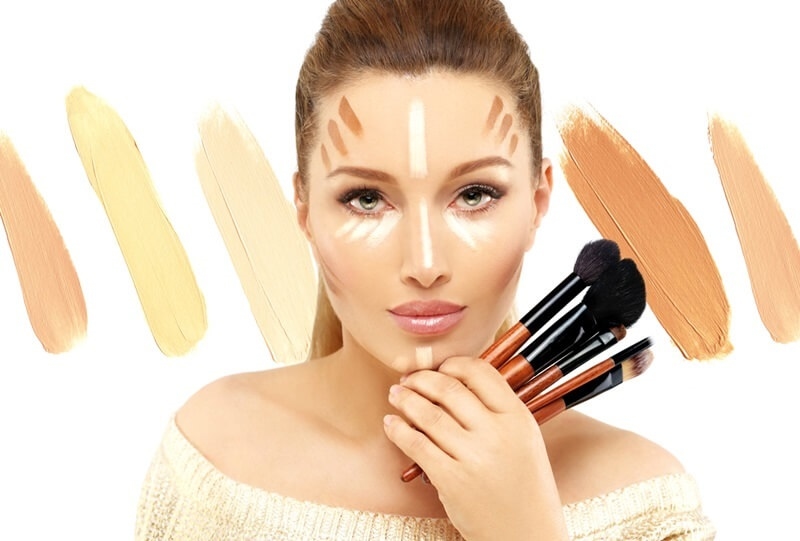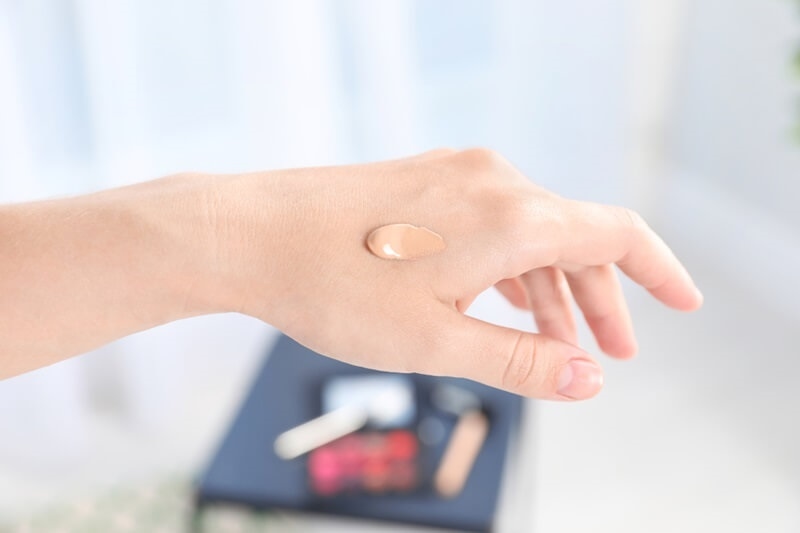
Choosing the right base is key to getting a great makeup look. Your foundation sets the look for your whole face. But many find it hard to pick the right type and color. There are loads of foundations out there — it can be too much!
If you have oily skin, dry spots, or a unique skin color tone, this guide will make it easier. Let’s see how to choose foundation shade, learn about different kinds, and get the right type for your skin.
Before knowing how to choose foundation shade, know your skin type. Each skin is different. A foundation that’s good for dry skin may not suit someone who keeps wiping away oil.
People with oily skin should look for products that reduce shine and don't slide off. Matte or oil-free options are best. Always check for terms like "long-wear," "shine control," or "oil-absorbing." The best foundation for oily skin often has a powder finish and hides pores.
When skin feels tight, flaky, or rough, you have dry skin. You need moisture and a glowing finish. Good bases use words like "wet," "full of wet," and "soft." Cream or wet ones are best for face paint.
This skin has oily and dry spots. You need a fair choice, maybe half-dull or silky end. Thin, wet, or bendy bases work well on mixed spots.
Seek those hypoallergenic, fragrance-free, non-comedogenic products that won’t clog your pores. Foundations labeled for sensitive skin or for acne-prone users would be best.
There are many foundations, each with varying feels, finishes, and coverages. Here are different foundation types explained:
The most common. All skin types can find a fit. They range from light to full coverage and have different finishes.
It is good for oily or acne-prone skin. It gives a matte look and works for touch-ups, but it might not suit dry or aging skin.
They are great for travelling or on the go. Medium to full coverage, works well for combination and oily skin.
It's rich and helps a lot, and it’s great for dry or old skin. It goes on easily and gives medium to full coverage.
Popular in Korean beauty routines. These come in a compact with liquid-soaked sponges. They're for light to medium cover and quick fixes.

Now let’s talk about a big issue: picking the right foundation color. The wrong shade can make you look too pale, too dark, or gray.
Your undertone is the subtle hue below your skin's surface. It doesn't change with the weather or with the sun. There are three types:
Look at the veins on your wrist to find out:
Always try foundation on your jawline, not on your hand or wrist. It better matches your face and neck. Put on two or three close shades and mix a bit. The shade that blends in well is the one for you.
Store lights can fool you. After you put samples on, go outside and see your skin in natural light. This shows if the shade fits your skin well.
Some foundations may get darker a bit later because of oxidation. Wait about 5-10 minutes after using the sample to pick if it’s the right one.
Your skin color can change with the season due to the sun or other things. You might need a darker base in summer and a lighter one in winter. Keep two near shades and mix when needed.
Learning to match skin tone isn't just about skin color but how you put on and mix your foundation. Here are some simple tips:
After picking your shade, think about the finish you want:
Some may like different shines for different times. A matte base for long days and a dewy one for free days or events is a good plan.
For example, if you have different clothes for different times, having many foundations makes sense. You may want:
More choices help you pick as per your skin’s needs and the weather.
Even with your best try, easy mistakes happen. Here’s what to skip:
If you have special skin needs, like redness, marks, or not even tone, pick a base with skin help. Look for words like “color fixing,” “full cover,” or “calm ingredients.”
Mineral ones are good for sensitive or easy-to-break-out skin, as they often have fewer irritants.
Let’s see some foundation tips for different skin types:
When picking the right foundation, remember to consider sun protection, too. Many new foundations have SPF built in, which guards your skin from harmful UV rays all day. It's not a stand-in for your usual sunscreen, but a foundation with SPF gives another layer of safety.
If you're outside a lot, go for a foundation with SPF 15 or more. It's an easy trick to mix skincare and beauty with no fuss.
Selecting the right base is not just about the shade but knowing your skin type, the look you want, and your day-to-day needs. Once you know how to pick and use the right base, everything else is easier. Take your time trying and don’t fear asking for samples or help when buying.
Knowing how to pick, using tips for your skin tone, and picking the best base for oily or dry skin will save you time, money, and stress. With the right base, all your makeup gets easier - and you feel great.
This content was created by AI